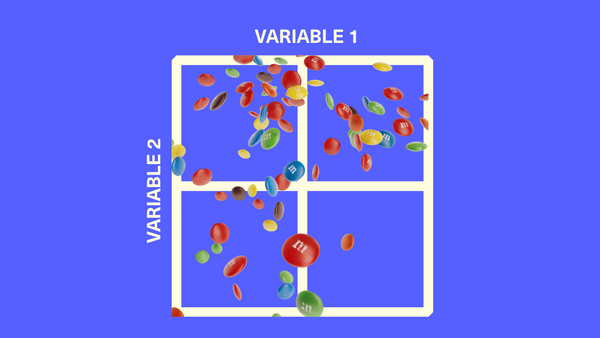Walmart is Betting on AI Agents, While Amazon Goes Proprietary
The brands and retailers that get this right won't be the ones with the flashiest AI features. They'll be the ones that make it seamless for both humans and bots to do business with them.

News broke last week from the Wall Street Journal: 'Walmart Is Preparing to Welcome Its Next Customer: The AI Shopping Agent' published May 15.
I'm going to share an overview of the news, a few perspectives that have been shared by others in the space so far about what it means, and then offer my own.
Part 1: What Walmart's doing
Key takeaways from the WSJ piece:
- Walmart is building its own shopping agents for basic tasks like re-ordering groceries and handling prompts like "plan a unicorn-themed party for my daughter."
- Agent-to-agent protocols are being developed, but they're not yet ready. Walmart's CTO envisions industry protocols letting third-party agents communicate directly with retailers' agents.
- Search ranking influences agent behavior. OpenAI's Operator considers how prominently pages rank in web searches, including paid ads. Highly ranked pages are more likely to appear in Operator.
- "Interoperability" is key. Walmart is preparing for customers using both Walmart's own agents and third-party agents.
- Agent shopping is fundamentally different. Bots may ignore emotional imagery, and retailers will need split-second pricing decisions.
Part 2: How it ties into other AI developments
Which retailers are doing something similar? Amazon is the only one getting close. Every initiative we can point to today is still a retailer-controlled assistant embedded in the retailer’s own site/app.
Amazon’s related moves in the space:
- Amazon has actually blocked other AI agents in favor of developing their own, and I don’t see this changing anytime soon.
- Amazon’s ‘family tree’ of consumer-facing AI agents now includes Alexa+ and Buy For Me. Its native shopping assistant is Rufus, which is not currently an agent. Amazon also launched a developer-focused tool called Nova Act which could int theory be used to create AI shopping agents that interface with other retailers. (coming soon from me, a real family tree - be sure to subscribe!)
Two key open standards to know about: Google's Agent to Agent (A2A) protocol and Anthropic's Model Context Protocol (MCP), which lets AI models connect with external tools and data sources. These could enable Walmart's interoperability bet.
Amazon is building a walled garden; Walmart is preparing for an open ecosystem.
Part 3: Industry POVs
A few reactions from industry folks so far from last week which caught my attention:
The low hanging fruit is product content
- Eric Heller made a smart point: "One thing we should never lose sight of though is the importance of complete PDPs. I still see pages without complete/informative images or that are missing key information in the search bullets. It won't matter how good your machine to machine API is if you have incorrect information on the PDP."
- My response: Good call and for brands, the first priority should be your own DTC site. Even Amazon reconciles info from their catalog with ecommerce sites.
Is this what consumers really want?
- Bryan Gott offered a reality check: "I feel like a lot of organizations have failed to ask one thing. Do people want AI help. Cause I mostly don't and it's increasingly annoying to get it forced on me."
- My response: Let's look at cohort data rather than N=1 reactions. FWIW, I agree the experience of many AI assistants on retailer sites is underwhelming. But the experience of collaborating with ChatGPT on product discovery is amazing. That’s what this tech is solving for, not another chat-bot.
Part 4: My POV and outstanding questions
Here's what I'm thinking about as this unfolds.
What happens to Sponsored Product Ads? Will agents "see" them? I've seen one post suggesting Operator focuses on top product results, which include sponsored products. But I need to investigate how agents actually process paid placements versus organic results.
Retailers are rushing to build proprietary AI assistants. What's the opportunity cost versus preparing for third-party agent integration? Walmart is hedging by doing both.
Site performance could become competitive. Agent traffic creates new load patterns—false impressions, slowdowns, unpredictable spikes. A direct agent-to-agent interface eliminates these issues.
Optimizing for agent preference. Will agents prefer sites with an agent layer on the other side? It's less compute power for them. Imagine a scenario where I've been chatting with my AI about what kind of bug spray will work best for me. The agent could pull inventory availability, pricing, and delivery options almost immediately with an agent layer on some retailers, versus others where it will have to navigate to a site to do all this "manually," possibly making your site less desirable to the agent, who may be optimizing in part for less compute power to run a search.
In conclusion
The brands and retailers that get this right won't be the ones with the flashiest AI features. They'll be the ones that make it seamless for both humans and bots to do business with them.





